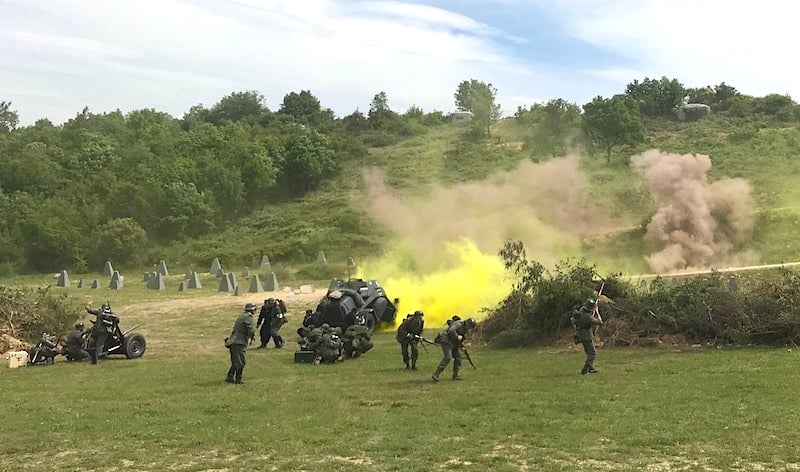

Greece paid tribute this weekend to Fort Roupel and the underground forts of the Metaxas Line, on the border of Greece and Bulgaria, where Greeks fought against the Axis forces in the spring of 1941.
Every year, thousands of visitors flock to the area to see the re-enactment of these legendary moments of fierce resistance. Participants were clad in meticulously researched World War II-era uniforms and bearing realistic replicas of period weaponry. Carefully planned explosions and pyrotechnic displays recreate every year the intensity of the battles, offering a spectacular look to the days of 1941 when Greece heroically defended itself against the Nazis.
Fort Roupel was the main resistance front when German forces invaded Greece in April 1941. Its construction started during World War I and was then incorporated into the Metaxas line, which prepared Greece ahead of World War II.
The Greek soldiers held their ground for several days fighting against Europe’s strongest army at the time, that of Nazi Germany. By not surrendering, they showed the entire world that freedom is worth fighting for even when being against all odds.
This year’s reenactment depicted the intense final moments of combat, with thousands of students from several schools from all over Greece attending the events. The reenactments also included the negotiations that ultimately led to the fall of Thessaloniki, Greece’s second-largest city and capital of Macedonia.

Germany, after advancing very quickly in Yugoslavia, headed towards Greece’s Thessaloniki, defeating Greek troops at Doiran Lake. The nazi army captured the city by April 9th.
However, the Greek armed forces managed to inflict serious damage to the advancing Germans from their strongly fortified mountain locations and particularly from Fort Roupel.
Fort Roupel, which was incorporated into the Metaxas Line, held out against the German attack and was only abandoned by its men after the surrender of the Greek army in Thessaloniki.
The valor of the outnumbered Greek soldiers who fought there was later praised even by German generals.
When the Germans had successfully cut them off from the rest of the country, the Greek Second Army surrendered to the attackers on April 9th, after which any real resistance on the east bank of the Axios River ceased.
The German invasion of Greece killed more than 13,000 Greek soldiers, with an additional 62,660 being injured, and 1,290 listed as missing. The British forces, who joined in the defense of Greece against German aggression, also suffered severe losses across Greece. Their casualties included 903 killed and 1,250 wounded, alongside a staggering 13,900 captured by the advancing Nazis.
Following the Axis conquest of Greece, the country was partitioned in three and was distributed among Germany, Italy and Bulgaria. The capture of Crete marked the end of the Axis campaign in the Balkans and the total victory of Hitler’s army.
